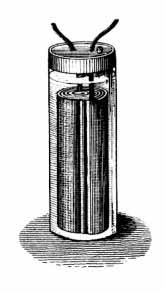
Team 764H
Heat Utilizing Hearing Aids
The First Hearing Aids
First seen as purely instrumental objects in
the mid to late 1500s, fully digital hearing aid models were not
available until almost
500 years later, at the end of the 20th century. Electronic hearing
aids would not have been possible without Alessandro Volta’s
invention of the world’s first battery in the early 1800s. Within
the next half-decade, french physicist Gaston Plante invented the
lead
acid cell, which later lead him to develop the first rechargeable
battery. Plante later found that when electrical energy from an
outside
source is applied to a rechargeable battery, the
negative-to positive flow from the electrons that happen during
discharge is reversed,
and the cell’s charge is once again at full strength.
The Batteries
Currently, there are three common types of rechargeable batteries available: NiCD, NiMH, and LiOn. Lithium-ion (LiOn) batteries are considered the best of the bunch, as they have a longer lifespan, hold a charge better, and are more compact.Types of Hearing Aids
In addition to the various batteries, there are two major types of hearing aids, canal and behind-the-ear. Behind-the ear, which is the largest apparatus, is entirely external and is capable of the greatest amplification. Canal hearing aids have two variations—one of which, the in-the-ear hearing aid, is entirely inserted into the ear canal after being custom fitted to the wearer. Other canal type aids are also fitted, but only partially inserted. Canal hearing aids are smaller than other types of hearing aids, less visible, and not as affected by wind noise; unfortunately, due to their size, the batteries are smaller and do not last as long.Current hearing aids work by picking up sound, which then travels to a microphone that changes the sound waves into an electric signal that allows the amplifier to strengthen it. From there, speakers broadcast the amplified signal to the ear as sound.

19th Century Ear Trumpet

Plante Lead Acid Cell